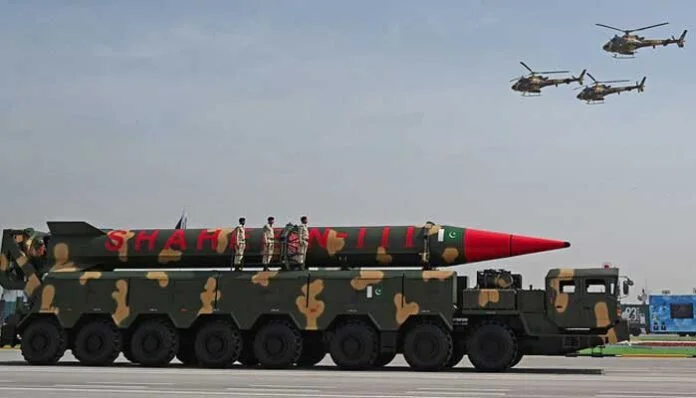The U.S. imposes sanctions on Pakistan’s National Development Complex (NDC) & three other entities, citing their role in the ballistic missile program.
Pakistan slams this as discriminatory, questioning U.S. motives in South Asia. Is this a step toward peace or instability?
On Wednesday, the U.S. announced sanctions on four entities linked to Pakistan’s ballistic missile program, including its state-run National Development Complex (NDC).
These sanctions were imposed under Executive Order 13382, targeting proliferators of weapons of mass destruction.
![U.S. State Department [Wikimedia Commons]](https://pkafgyouthforum.com/wp-content/uploads/2024/12/GfVDQhzWMAAJ4kr.webp)
The U.S. alleges that these entities support the development of Pakistan’s missile systems, particularly the Shaheen series of long-range, nuclear-capable missiles.
The sanctions freeze their U.S.-based assets and prohibit American businesses from engaging with them.
![US State Department principal deputy spokesperson Vedant Patel [X/File]](https://pkafgyouthforum.com/wp-content/uploads/2024/12/GfVFNRNWMAAOD5L.webp)
This marks a significant escalation, as the sanctions now target Pakistan’s state defense institution, the NDC, and private firms associated with it. For Islamabad, this is seen as a direct challenge to its sovereign right to maintain strategic defense capabilities.

Also See: Pakistan Condemns U.S. Sanctions on Ballistic Missile Program Entities as Discriminatory
Pakistan’s Ministry of Foreign Affairs condemned the move, stating: “Our ballistic missile program is a sovereign right for defense purposes. It complies with international norms and has no intent for proliferation. This action is discriminatory and undermines regional peace.”
![The Ministry of Foreign Affairs in Islamabad [FILE]](https://pkafgyouthforum.com/wp-content/uploads/2024/12/GfVEycAXYAEN19l.webp)
Analysts warn these sanctions could dangerously destabilize South Asia, as Pakistan’s missile program serves as a vital deterrent against threats, particularly from India. Meanwhile, India continues to expand its missile and nuclear arsenal without similar scrutiny from the U.S.
![India’s Agni Nuclear Missile [File]](https://pkafgyouthforum.com/wp-content/uploads/2024/12/GfVFBpqW4AAo91N.webp)
Pakistan also highlighted U.S. double standards, asking why no action has been taken against India’s diversion of peaceful nuclear technology for military purposes or its unchecked buildup of missiles and nuclear weapons. Does this signal a shift in U.S. priorities in South Asia?

“Sanctioning private and state entities based on unsubstantiated claims is regrettable and discriminatory,” Pakistan asserted. It urged the U.S. to adopt a fair approach, focusing on dialogue and transparency instead of punitive measures that deepen mistrust.
![Pakistan's foreign office spokesperson Mumtaz Zahra Baloch addressing a weekly press briefing in Islamabad [MoFA]](https://pkafgyouthforum.com/wp-content/uploads/2024/12/GfVF3RUW4AAOGD6.webp)
With U.S.-Pakistan relations already strained, this move raises questions about Washington’s commitment to strategic stability in South Asia. Does the U.S. aim to promote peace, or is it fostering new fault lines in the region?

The stakes are high. For Pakistan, its strategic capabilities are not just a defense mechanism but a trust from its people. This latest U.S. action threatens to weaken that trust, with far-reaching implications for regional and global stability.
PAYF Insights are social media threads by various authors, reproduced here for wider consumption.



